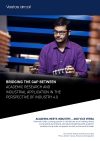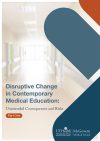Data analytics could transform student experiences, but higher education institutions need to gather and efficiently measure information
It’s well known that the use of data analytics has the potential to transform student outcomes and their experiences. But the higher education industry continues to navigate how to effectively gather, measure and intelligently analyse information to support decision-making within the institution.
By incorporating intelligent data analytics into teaching and learning practices and day-to-day operations, institutions have the potential to grow student enrolment, transform learner experiences and significantly improve student retention and completion rates, creating actionable insights from reliable, privacy-compliant data.
Improving student outcomes and supporting instructors and administrators through data is understandable in theory, but how can institutions make this data-driven landscape a reality?
Training comes first
Any change adds a layer of complexity compounded by training and governance and change through intelligent analytics is no different. Colleges and universities should start with the mindset that different audiences need different types of training and support before they move forward.
For example, students may require training if the institution is considering giving them more access to data. Training can have a considerable impact, as embracing new technology to automate processes and support improved progress on their educational journey creates a new normal for these students. For lecturers, advisors and administrators, training should help them understand how to use data to pinpoint students who need more support or interventions to help them succeed.
Overcoming obstacles
There are many challenges to embedding intelligent data analytics, but any long-term outcomes outweigh the short-term hurdles. And transformation through analytics is only achievable when all leaders in a higher education institution are on the same page. Bringing together the institution’s data ecosystem and breaking down silos to create what we call “intelligent experiences” requires collaboration across the institution so data can be used to fulfil the institution’s goals.
Typically, this work does not fall to one person. Most likely, teams within Institutional Research and Effectiveness or a similar area will lead data-focused projects. As these areas are typically understaffed and charged with handling more basic institutional reporting, compliance and accreditation needs, this often leaves little time for data exploration and analysis.
Higher education leaders can help with this by shifting the focus to creating these “intelligent experiences” and automating their ability to identify the right data combinations, meaning that some exploratory analysis may not even be needed. In addition, leaders should create organisational cultures that recognise, reward and utilise data in depth, so advances can be made in fostering student success, improving teaching and learning, or increasing operational efficiency.
Optimising through analytics
Any institution with an assessment professional is likely already doing the primary type of data analysis that leads to “continuous improvement.” What we’re focused on here, however, are examples of where the data inputs are complex combinations of interrelated variables that, if properly explored, may lead to even greater levels of insight around opportunities to progress.
A great example of this can be seen in career services. Traditionally, optimising one’s career trajectory required a student to sift through numerous and often non-personalised career development resources.
Usually, this is followed by a meeting with a career advisor to discuss which course electives would best complement their major. This process can be easily simplified by comparing labour market data with detailed analyses of academic needs, giving students a registration-ready schedule aligned with their career aspirations.
This also leads nicely to using more data science-driven forms of analysis, such as natural language processing, which can help deliver more personalised recommendations for students inside and outside the classroom to widen their skills for chosen careers.
Higher education leaders must make incremental changes to truly get the best out of data analytics in years to come. Institutions need to form core analytics functions, creating a new culture of decision-making driven by data insights. Using data in this way will deliver significant value for university students and teaching staff and ultimately bring sustainability to the future while delivering improvements in measurable outcomes.
Chris Husser is a data evangelist interested in improving teaching and learning, engagement and assessment for Higher Education and is the Vice President of Product Management at Anthology.
Editor's Recommended Articles
-
Must Read >> Big data and analytics services and software






























